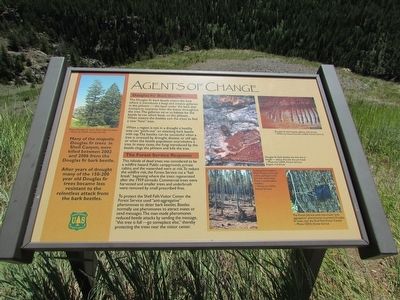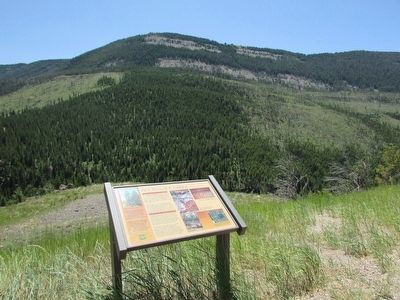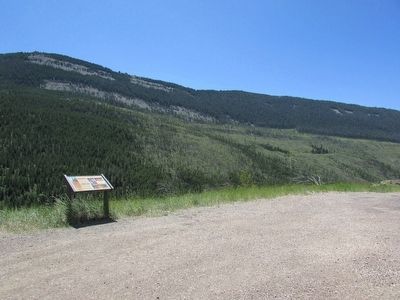Greybull in Big Horn County, Wyoming — The American West (Mountains)
Agents of Change
When a region is not in a drought a healthy tree can “pitch-out” an attacking bark beetle with sap. The beetles can be successful when a tree is stressed by drought, disease, or old age, or when the beetle population overwhelms a tree. In many cases, the fungi introduced by the beetle clogs the phloem and kills the tree.
The Forest Service Response
To protect the Shell Falls Visitor Center the Forest Service used “anti-aggregative” pheromones to deter bark beetles. Beetles normally use pheromones to attract mates or send messages. The man-made pheromones reduce beetle attacks by sending the message, “this tree is full – go someplace else,” thereby protecting the trees near the visitor center.
Many of the majestic Douglas fir trees in Shell Canyon were killed between 2002 and 2006 from the Douglas fir bark beetle.
After years of drought many of the 150-200 year old Douglas fir trees became less resistant to the relentless attack from the bark beetles.
Erected by US Forest Service.
Topics. This historical marker is listed in this topic list: Horticulture & Forestry.
Location. 44° 34.346′ N, 107° 33.046′ W. Marker is in Greybull, Wyoming, in Big Horn County. Marker is on U.S. 14, on the left when traveling west. Marker is located in Bighorn National Forest. Touch for map. Marker is in this post office area: Greybull WY 82426, United States of America. Touch for directions.
Other nearby markers. At least 8 other markers are within 4 miles of this marker, measured as the crow flies. Nature's Destruction (here, next to this marker); Wringing Out a Livelihood (approx. 3.3 miles away); Moving Mountains (approx. 3.3 miles away); A 4,000 Mile Journey (approx. 3.3 miles away); Forming Waterfalls (approx. 3.3 miles away); Hummingbirds (approx. 3.3 miles away); Shaping a Canyon (approx. 3.3 miles away); Lifeblood of the West (approx. 3.3 miles away).
More about this marker. Several photographs of Douglas firs appear on the marker. On the left is a photo of some Douglas fir trees with a caption of “These Douglas fir trees show signs of stress.” On the upper right is a photo of “Douglas fir bark beetle gallery with larvae.” Next to this is a photo of a beetle with a caption of “Douglas fir bark beetles are 4-6 mm in length – about the size of a pin head.” Two photos at the bottom right of the marker have captions of “Cutting fuel breaks in Shell Canyon protects cabins, campground, and the watershed from a catastrophic wildfire.” and “The Forest Service used man-made, “anti-aggregative” pheromones to protect Douglas fir trees near Shell Falls Visitor Center.”
Credits. This page was last revised on June 16, 2016. It was originally submitted on September 4, 2015, by Bill Coughlin of Woodland Park, New Jersey. This page has been viewed 306 times since then and 7 times this year. Photos: 1, 2, 3. submitted on September 4, 2015, by Bill Coughlin of Woodland Park, New Jersey.


